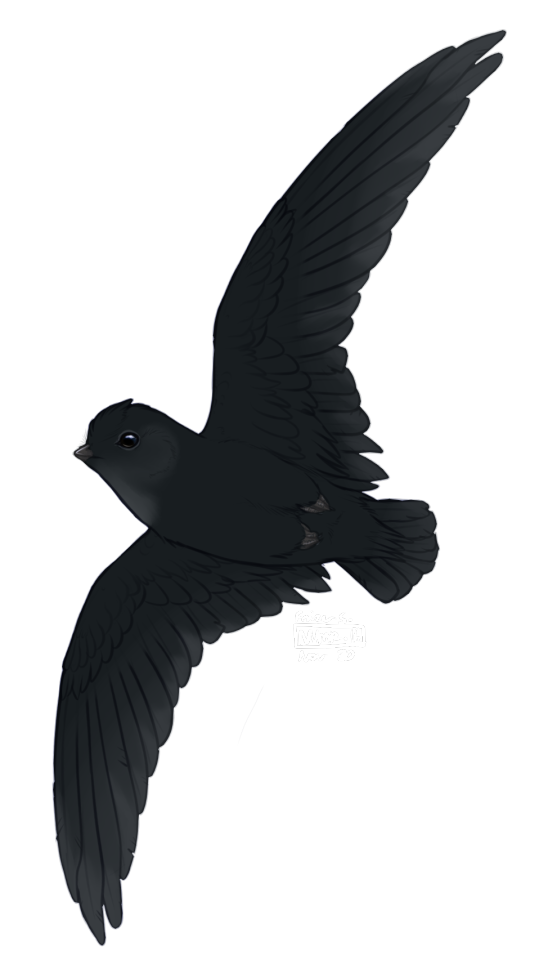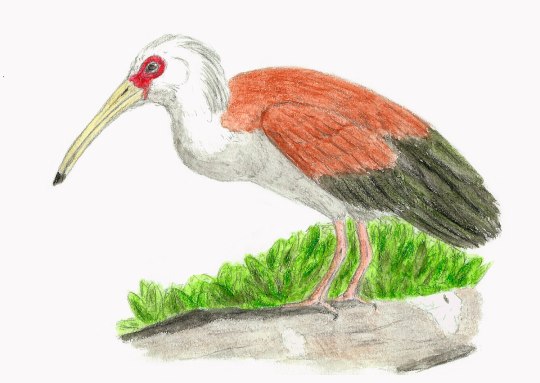#same goes for fossil novembirb
Explore tagged Tumblr posts
Text
I was going to do NaNoWriMo. I was going to participate this year! But I’m apparently completely unable to do much of anything at the assigned time at the moment, so I’m suddenly drawing more than I was instead of writing like I’m supposed to.
#same goes for fossil novembirb#I was super excited for it#but I think I’m just going to have to do it in December because that’s not when it’s supposed to be#Inktober is going in March#and honestly right now the only way I’m getting work for my actual job done#is by not working during my actual work hours#and working during my off hours#which is honestly a gigantic pain but I think that’s just kind of#where I am right now
3 notes
·
View notes
Text
Fossil Novembirb 6: Tropical Denmark

Septencoracias by @quetzalpali-art
We have a whole host of early Eocene ecosystems filled to the brim with birds - such a reversal from the Cretaceous and the Paleocene! - that we had to keep highlighting these ecosystems. So, next on our list is the Fur Formation of Denmark - another very early Eocene ecosystem, right after the PETM, that shows how Neoavians diversified so rapidly in the wake of the K-Pg extinction.
Associated with volcanoes, this ecosystem was periodically buried in ash, leading to the exceptional preservation of its fossils. It was a tropical forest, like most of the world at that time, near the coast; allowing the fossils to preserve a variety of marine as well as arboreal species. So, good news for us bird lovers!
In fact, there are so many different birds in this ecosystem, I can't possibly list or talk about them all. So, I'm just going to have to do my best to summarize!

Eocypselus by @saint-nevermore
This formation shows the oldest known members of many bird groups still found today, which is an important piece of the puzzle of Neoavian evolution. The earliest Rollers, Trogons, Swifts, and Ibises are all known from this ecosystem - as well as a wide variety of other birds that have older representatives, such as the Lithornithids.
In fact, for all the absence of Palaeognaths in the Cretaceous and earliest Paleocene, around the PETM the Lithornithids really took off - pun intended! They were found all over North America and Europe, which may have given them a prime position from which to radiate to the rest of the world... and evolve into the Palaeognaths we have today? Maybe. More work on that question is, of course, necessary.
Other interesting birds include Morsoravis, the early Parrot-Passerine relative with flexibly zygodactyl feet and kinetic skulls, allowing them to manipulate food and climb around on trees - common in its ecosystem. What's wild is this was very similar to the foot of living mousebirds - which are nowhere closely related to Parrots or Passerines - showcasing this as a case of convergent evolution in avian feet! That happens a lot, actually...

Rhynchaeites by Diego Ortega
Septencoracias was another fantastic bird of this ecosystem, being the oldest known roller. Previously, it was thought that rollers only appeared in the Miocene, so this pushes back their origin by tens of millions of years and also indicates that modern-type rollers appeared very early on in avian evolution. Furthermore, Septencoracias was found with fish in its gut, indicating that rollers at the time had a wide variety of food sources!
Eocypselus was another fascinating fossil of an early swift-hummingbird, ie, a relative of both groups but not more closely related to either. This showcases that these birds evolved their small size first, before specializing into the niches they hold today. It was black in color, and was probably an insectivore, like its living relatives!
The first ibises showed the long beak distinctive of the group, as seen in Rhynchaeites/Mopsitta, and had long legs for wading just like in living members. And relatives of modern rails, Messelornithids in the form of Pellornis, were wading along the shoreline right with them.

Eoglaucidium (a Sandcoleid), photograph by Ghedoghedo
In fact, one thing that's becoming clear about birds is that they tend to repeat the same ideas - locked in to certain developmental constraints, such as not re-evolving arms, they try out different ecologies that work well and continuously convergently evolve those adaptations over and over again. Wading, flexible feet, climbing and perching, the list goes on!
We'll see that continue throughout this series, but of course, unique adaptations will continue to come up in spades! These are birds we're talking about here.
Sources:
Mayr, G. M., A. C. Kitchener. 2023. A new fossil from the London Clay documents the convergent origin of a “mousebird-like” tarsometatarsus in an early Eocene near-passerine bird. Acta Palaeontologica Polonica 68 (1): 1-11.
Mayr, 2022. Paleogene Fossil Birds, 2nd Edition. Springer Cham.
Mayr, 2017. Avian Evolution: The Fossil Record of Birds and its Paleobiological Significance (TOPA Topics in Paleobiology). Wiley Blackwell.
53 notes
·
View notes